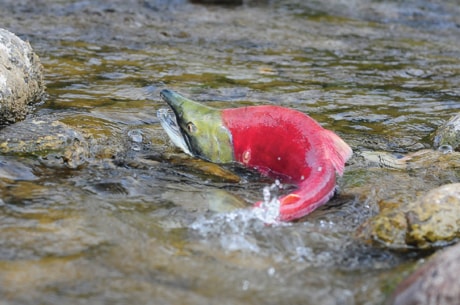Myrna Pearman was raised on a farm near Rimbey and has been interested in nature since she was a child. A graduate of the University of Alberta, she has held the position of biologist and site services manager at Ellis Bird Farm since 1987. She is active with the Red Deer River Naturalists, has written several books and is a passionate photographer. Her most treasured moments are those spent outdoors with her camera. Her photo essays will appear monthly in the Advocate.
I made a pilgrimage in mid-October to witness one of the most amazing natural history events on the planet: the return of sockeye salmon to the Adams River in B.C.
After spending two years in fresh water, then two in the Pacific Ocean, the salmon return to their natal streams by swimming up the Fraser and Thompson rivers to the Adams River. It is an onerous 485-km journey, which they undertake without eating, over a period of about 17 days. The sheer magnitude of the 2010 migration —the largest four-year peak in a century — was astonishing. The juxtaposition of life and death was vividly surreal as we watched thousands upon thousands of fish fulfilling their pre-programmed destiny: first by offering their precious cargo — eggs or milt — and then by surrendering their lives.
info@ellisbirdfarm.ca
